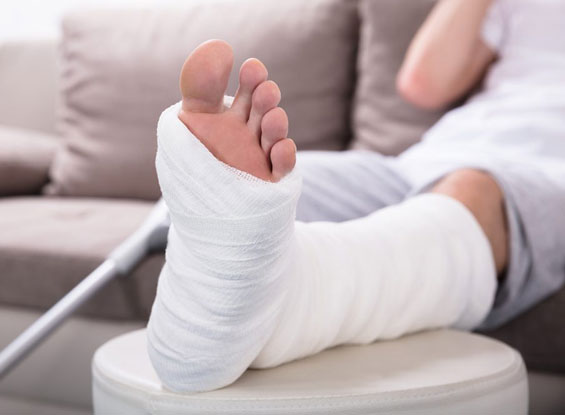A traumatic fracture is a break in the bones that comprise a person’s skeletal structure. It occurs when enough physical force is exerted on the bone that is greater than the strength of the bone itself. It is normally caused by some accident, fall, or other kind of force. For example, a traumatic fracture can occur during a motor vehicle accident or when a person is struck with a heavy object. Risk of a fractures also depend upon the victim’s age. Broken bones are more common with children and the elderly as their bones are more fragile.

There are a variety of fractures types, but the main categories are displaced, non-displaced, open, and closed.
Within these broad categories, the fracture can be even more defined. A greenstick fracture in which the bone is bent, but not broken all the way through. A buckle fracture results from compression of two bones driven into each other. A growth plate fracture happens at the joint that can cause shorter bone length, which is especially challenging with children. A comminuted fracture is when the bone breaks into several pieces. A transverse fracture is when the fracture line is perpendicular to the shaft of the bone. An oblique fracture is when the break is on an angle through the bone. A stress fracture is a hairline crack in the bone. Regardless of the fracture, they all can cause these symptoms:
If you suffer a fracture, you need to get medical care right away. An x-ray can tell if your bone is broken and what required treatment may be necessary.
The severity of the injuries and treatment options depend upon the fracture and where it is located. Minor non-displaced fractures require nothing more than a cast and likely medication for pain. Serious fractures, however, can have alarming complications if not treated promptly. Some of the possible complications are:
To minimize the risks, urgent treatment should be sought. The fracture cannot heal if not kept in place. Casts and splints are used as devices to keep the bones in one place so it can heal. How long you need to be immobilized depends upon the location and severity of the fracture. You may also need mobility devices such as a cane, wheelchair, or crutches to help take weight off lower body fractures when moving around. Medication for the pain and swelling may also be prescribed.
Sometimes surgery must fix the fracture. If the injury requires repositioning of bone fragments, it may be necessary to have an orthopedic surgery perform an open reduction and internal fixation of the pieces where pins, screws, metal plates and rods are used to put the pieces back together again. A fracture may also require external fixation where hardware is placed through the skin into the bones to stabilize the pieces while they heal together.

Fractures are debilitating and expensive. Medical bills will pile up as the injury forces you to take time away from work. You may need prescription medication and physical therapy once your bone is healed. If someone else caused the accident that led to your injury, you should not have to pay the price financially and physically.
An attorney who understands fractures and what is needed to heal is the best resource for determining who is responsible for your losses. We will also work with you to make sure you get the necessary medical treatment and care to get you back on your feet. Call us today.
